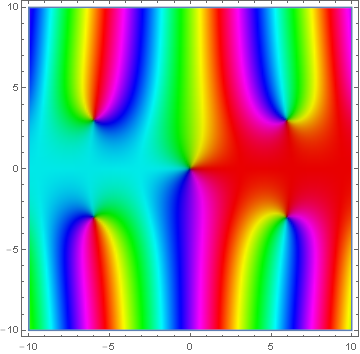Difference between revisions of "Sine integral"
From specialfunctionswiki
| Line 9: | Line 9: | ||
</gallery> | </gallery> | ||
</div> | </div> | ||
| + | |||
| + | =Relationship to other functions= | ||
| + | {{:Relationship between exponential integral Ei, cosine integral, and sine integral}} | ||
=Videos= | =Videos= | ||
Revision as of 01:23, 2 December 2015
The sine integral is defined by $$\mathrm{Si}(z) = \displaystyle\int_0^z \mathrm{sinc}(t) dt; |\mathrm{arg} z|<\pi,$$ where $\mathrm{sinc}$ denotes the Sinc function.
- Si.png
Graph of $\mathrm{Si}$.
Domain coloring of analytic continuation of $\mathrm{Si}$.
Contents
Relationship to other functions
Theorem
The following formula holds: $$\mathrm{Ei}(ix)=\mathrm{Ci}(x)+i\mathrm{Si}(x),$$ where $\mathrm{Ei}$ denotes the exponential integral Ei, $\mathrm{Ci}$ denotes the cosine integral, and $\mathrm{Si}$ denotes the sine integral.
Proof
References
Videos
Laplace Transform of Sine Integral
